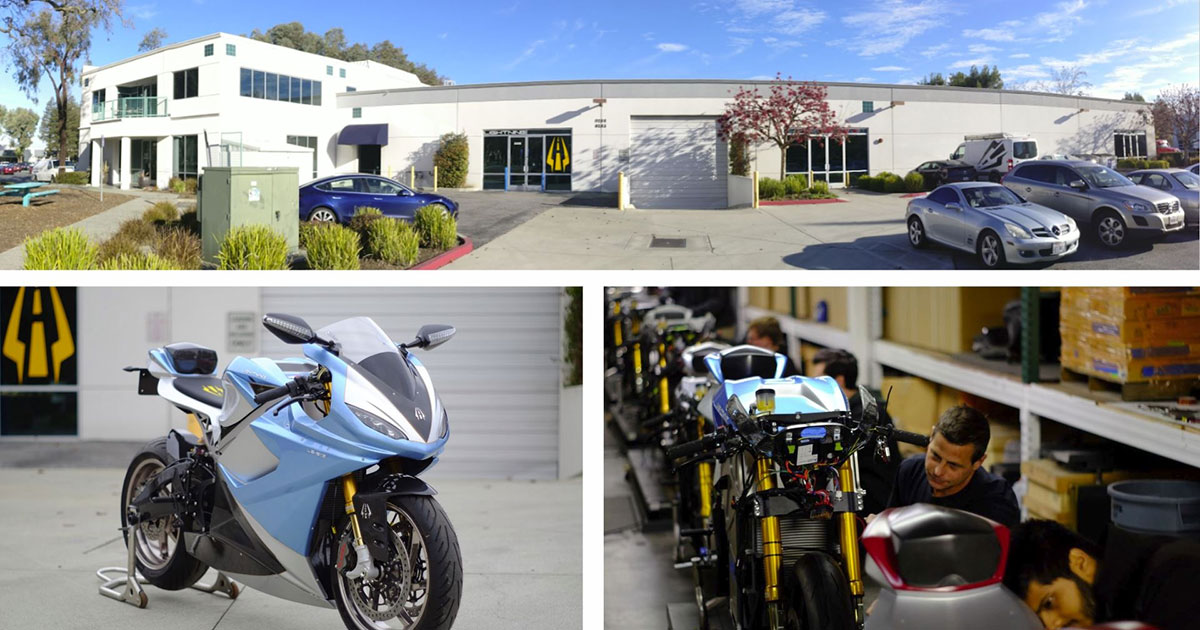Manufacturing is changing. With the advances of Industry 4.0, manufacturers are under pressure to bring factories online that meet customer expectations in both cost and delivery time, all while producing a high-quality product.
To stay competitive, decision-makers need to embrace technologies like generative design and additive manufacturing (also known as 3D printing) to bring design and manufacturing processes closer together.
The story of Lightning Motorcycles
Richard Hatfield has been an enthusiast of motorcycles and mechanics since he was a teenager. After working with a group of friends to build an electric Porsche, Hatfield became interested in electric motors, quickly realizing that dealing with a battery is a lot better than dealing with petroleum.
Hatfield combined those interests together to develop a lithium battery-powered sports bike and began his company Lightning Motorcycles.
But small, emerging companies need to be efficient in producing their products cost-effectively and in a timely manner. It soon became apparent to Hatfield that the more they could reduce the time in evolving component areas on the bike — going from concept to design to testing a prototype to refining it and doing that cycle as quickly as possible — the more the company could advance the product.
The solution for Hatfield was a software collaboration with Autodesk. The ability to improve product development via generative design and additive manufacturing is the future of
manufacturing. For example, any part of the motorcycle made of plastic, steel, or titanium could go from concept to having a part on the bike in a matter of days. There’s then a greater focus on end-to-end workflow and the ability to expedite processes, according to Hatfield.
How to improve design
“Manufacturers are under more pressure than ever to deliver better products faster, at lower cost, and with less waste,” said Greg Fallon, vice president of business strategy and marketing at Autodesk.
To compete in the near future, companies need to bring design and manufacturing together.
To stop treating them as separate disciplines allowing product development data to flow seamlessly through the process.
According to Fallon, “With generative design, we’re connecting design to manufacturing.”

Generative design allows designers and engineers to explore design options and facilitate decision making based on identified goals. The engineer inputs the design goals and other parameters such as materials and manufacturing methods, and the software finds the best solutions based on real-world manufacturing constraints and product performance requirements.
Fallon emphasized, “Generative design gives the design team the ability to come up with valid concepts faster and evaluate the full design space, something that is virtually impossible with a manual design process. It frees up valuable time by creating editable CAD geometry and by building manufacturability into the design options that are generated.”
How to build upon manufacturing
Additive manufacturing adds layers to a design to create a 3D product. Manufacturers like Lightning Motorcycles use 3D printing to streamline the manufacturing process. In the past, Hatfield said, making castings could take months and was an expensive process. Now he can turn $250 worth of aluminum into parts in a matter of days.
The greatest asset of 3D printing has historically been to create inexpensive prototypes, but the technology has improved to production quality. “Additive manufacturing is unlocking the potential for customization and personalization of products and on-demand production,” said Hatfield. “It’s making previously impossible designs possible and can dramatically improve product performance.”
By bringing design and manufacturing processes closer together, manufacturers will be more competitive. The Autodesk portfolio brings together tools for design, documentation, simulation, rapid prototyping, advanced manufacturing, data management, and collaboration.
“It is,” said Hatfield, “the future of manufacturing.”
Sue Poremba, [email protected]



